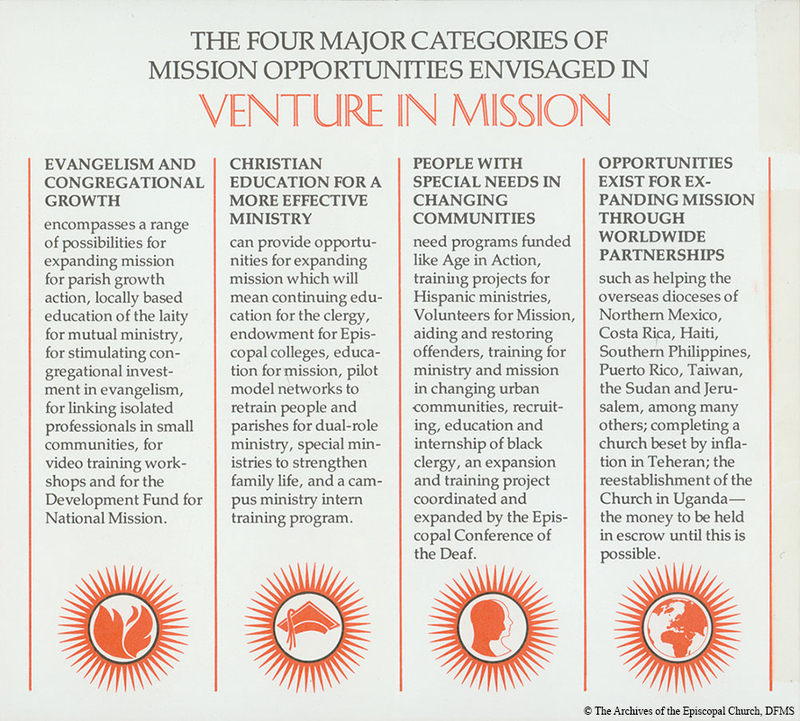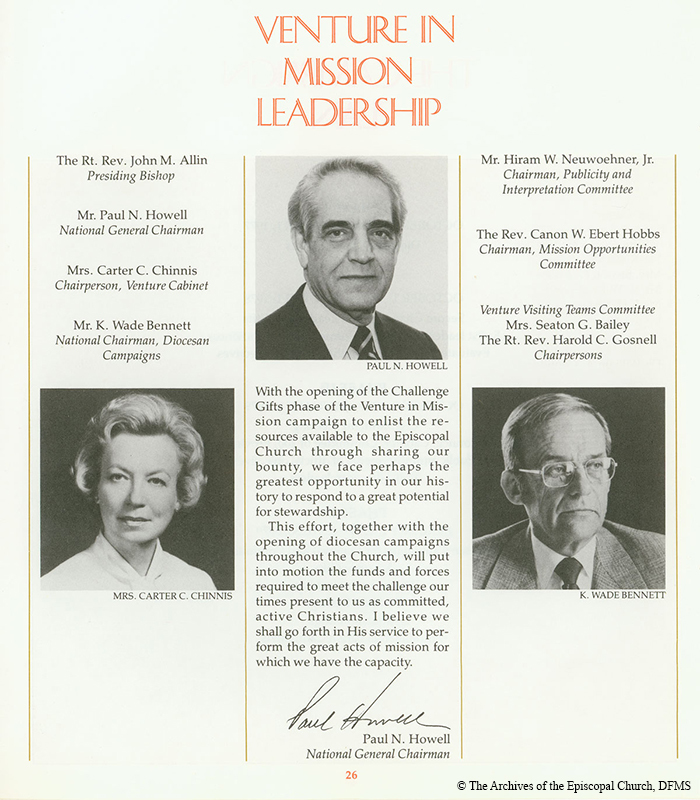Rethinking the Pipeline

VIM funds were used for a variety of purposes. This pamphlet, c.1978, identifies the four major categories of mission opportunity.

Pamela Chinnis, Paul Howell and Wade Bennett played key roles on the VIM leadership team.
“...what sometimes people who have been elected to the Executive Council of the Episcopal Church and people who served in the national offices of the Episcopal Church begin to assume, that really all monies must come through that center—that’s nonsense. I used to say, in particular during Venture in Mission, we’ve got to get over the pipeline theory, because it’s not possible to pipe all the money to 815 from whence it will be dispensed.” 66
Bishop Allin firmly believed that the offer of money in support of mission should be done wholeheartedly and voluntarily by every Church member: something that members would want to do, not ought to do. VIM was created to inspire and motivate each and every member to take ownership of the Church’s mission. Dioceses were to set their own fund-raising goals and prioritize spending; VIM would provide a way to coordinate funding of common mission opportunities (such as theological education) and create a practical, well-executed, Church-wide vehicle to maximize the campaign by limiting the investment of local resources.
“The National Church has no life apart from our dioceses and congregations.” 67
Many dioceses were dubious of VIM at the outset, assuming that the money contributed would go to Church Center rather than their local needs, but the intention of VIM was to put the money to work wherever each diocese deemed appropriate, whether that was a local need or outside of the diocese. When the Campbell’s Soup CEO committed to a $500,000 contribution to VIM, Allin recalled that the Bishop of Philadelphia, Lyman Ogilve, asked, “Who gets that money, you or me?” Allin responded, “You get it, of course, it’s your diocese, it’s all the same Church, we’re doing the same thing.”68 And when the Astor Foundation pledged one million dollars to VIM, it was designated for use only within the boroughs of New York within the Dioceses of New York and Long Island.

